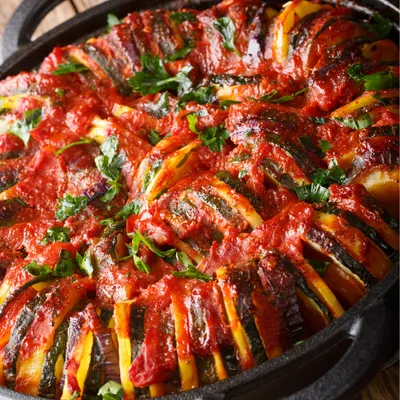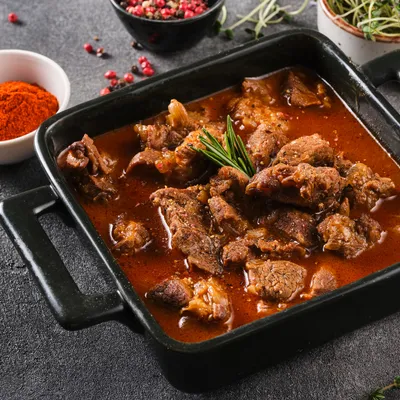- Our Research
- Education
- Giving
- News & Events
- About Us
- Donate
Nov 7, 2022
As the weather cools and the winter season billows in, we're humbled to share cultural, family recipes from a few of our staff at the Minneapolis Heart Institute Foundation. We hope one or more of these recipes brings warmth and happiness to your family table this season!
|
Image

|
Briam Casserole From Olga Cultural Significance |
- 2-3 medium eggplants
- 3-4 medium potatoes (Yukon gold, if using red potatoes, use more)
- 2-3 zucchini or yellow summer squash
- 1 red onion
- 4 cloves of garlic
- 1 can of diced tomatoes
- Extra virgin olive oil
- Salt & pepper
- Dried oregano
- Fresh parsley and any other dried or fresh herbs
- Served with feta
Directions
- Preheat the oven to 400 degree Fahrenheit.
- (Optional) Prepare the eggplant. Thinly slice the eggplant into 1/4 inch slices, arrange on a sheet pan and sprinkle with salt. Let this sit for 10-30 minutes and dab any moisture off the surface of the eggplant with a paper towel. This step is optional but can help make eggplant less bitter.
- Slice the zucchini/ summer squash and potatoes into 1/4 inch rounds.
- Mince the garlic cloves.
- Place the sliced zucchini and potatoes into a gallon ziplock bag or bowl and add garlic, then drizzle with olive oil, salt, pepper, and dried herbs. Mix to make sure all the vegetables are coated in olive oil.
- Pour half the can of diced tomatoes into the bottom of a casserole dish.
- Add the zucchini, potatoes, and eggplant to the casserole dish on top of the tomato mixture, then cover with the remaining diced tomatoes.
- Place tin foil over the top of the casserole dish, tenting the foil so it does not touch the vegetables, and bake for 45 minutes. Remove the foil and roast for an addition 30-40 minutes (or until much of the liquid has evaporated from the pan).
- Remove from oven. Top with fresh chopped herbs (parsley, mint). Can be served warm or at room temperature (so it’s an excellent choice for leftovers!) Serve with feta to accompany.
|
Image

|
Hungarian Beef Stew From Judit, Cultural Significance |
Ingredients
- 1.5 pound beef (preferably beef shank)
- 1 large yellow onion
- 1 white/green pepper
- 1 large tomato
- 4 tablespoons Hungarian sweet paprika
- Water
- Salt and pepper to taste
- 2 tablespoons of lard or vegetable oil
- 1/3 cup dry red wine
- Spicy paprika to taste
Directions
- Cut the beef into approximately 1-inch pieces.
- Chop the onion finely and sauté over medium-high heat with the lard until translucent (lard is the traditional recipe but it can be substituted with vegetable oil).
- Add the meat and roast for a couple of minutes until it is no longer pink.
- Add the chopped white/green pepper and the chopped tomato.
- Add the Hungarian sweet paprika, mix and add approximately 16 oz water, so that it would cover the meat (do not add too much water, because it has to have a thicker sauce).
- Add salt and ground pepper to taste.
- Bring to boil and simmer for about 90 minutes until the meat is soft (it might take longer depending on the meat, if the water evaporates add more water).
- Add the red wine and simmer for another 15 min.
- Add spicy paprika to taste. It is done when the meat is soft and the sauce is thick. Serve with boiled potatoes or Hungarian egg noodles (‘nokedli’), and cucumber salad.
|
Image

|
Swedish Pancakes From Joy, Cultural Significance Ingredients
|
- Beat eggs vigorously.
- Add milk, flour, salt, sugar and vanilla and mix well.
- Grease heavy iron skillet with butter or vegetable cooking oil for each pancake.
- Cook on each side until golden brown.
- To make roll-ups, fill pancakes with cooked fruit filling, roll and top with whipped cream.

